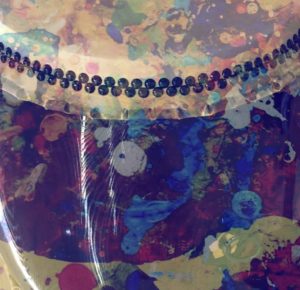Vintage PA: Learning Ogi Matsuri 2
 Everyone who teaches should try to learn a completely new skill every few years. It keeps you humble. It keeps you patient and kind to both yourself and to your students.
Everyone who teaches should try to learn a completely new skill every few years. It keeps you humble. It keeps you patient and kind to both yourself and to your students.
Some time ago, I heard our local Taiko group play at a wedding reception. I was entranced by the sound and the dance of it. I was also inspired since I was getting started on a group of piano arrangements based on Asian music & idioms.
I recorded a rehearsal and also met with the Sensei of Odaiko Sonora Dojo, Rome Hamner to find out more about Taiko culture. She played some traditional flute tunes on her Fue. Before you knew it, I was taking a 2 hour class every Saturday afternoon.
I found myself in a Japanese style educational environment (a blend of martial and creative arts) with social rules completely alien to my experience. I couldn’t count or say hello or goodbye without being taught how to do so. I was also the newest person so I had to sweep the floor when we were through.
Eventually, I became much better and more comfortable but I never attained anything resembling the beauty of form of the more experienced players. I found learning everything completely by rote to be a monumental challenge and a bit of a pain.
I’m a person who absolutely hates video tutorials. I don’t like sitting through the stuff that doesn’t apply to my question when I can find what I want so much faster by skimming through a written article until I find the section that applies to my specific need.
Having to wait and be given only the information the teacher wanted me to have was frustrating. Don’t get me wrong. The sensei were great. They gave us guidance in many ways so that all types of learners could succeed. There was a very helpful website resource page. But, my job was learner and I am so very used to being the one helping others—the one in charge.
Aarghhh! Why wouldn’t those bachi arrive on the drum head simultaneously? Why did I always get to a certain point in Ogi Matsuri and completely forget what was next? I found myself so lost with only rhythm and no harmonies to use as guideposts along the way.
Before I started, I thought “I should be good at this and able to pick it right up.” And, intellectually I I could. But physically, I mostly felt awkward. It was hard for me to run around the drum or to yell “Hai! spontaneously and without inhibition. Could it be that I hide behind the formality that is inherent in my classical training?
My arthritis got in the way of continuing my participation in Taiko classes. The wear and tear on my joints and connective tissue was just too much. During the months that I studied, I learned much about myself and began to empathize more fully with my transfer and beginning adult students. Also, I completed a gonga piano piece complete with Taiko sound effects!
The feelings I experienced in learning Taiko are probably pretty darn close to those of adults and late teens who come back to the piano after some time, change teachers, or decide to take lessons for the very first time. They are in an alien environment on the edge of a musical culture they may not be very familiar with. They each learn differently yet they all seek beauty and want to connect within an art form. They are also all really good at something else (medicine, knitting, web design, accounting, cooking) and expect to be good learners.
It’s my job to help them use the inevitable frustrations creatively and not allow them to get in the way of learning.


